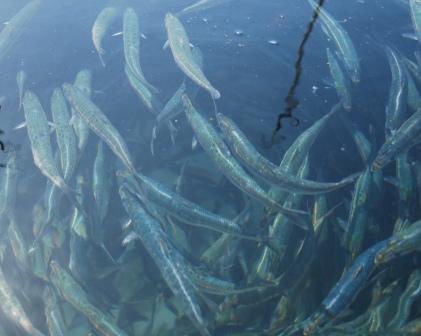
Pacific sardines
Well, somebody has to be the bait and quite often it’s the Pacific sardine or Sardinops sagax. Sardines average on the smaller side, but can grow up to more than 16 inches. Size is important because it’s an indicator of a sardine’s sexual maturity.
Here’s a telling quote from Dr. Milton Love’s book Probably More Than You want to Know About the Fishes of the Pacific Coast: “About 50% of all sardines mature at 7 to 8 inches and virtually all are mature by 9.5 inches.” This means that if you catch a sardine that’s only 5 inches and use it as bait, that poor fish never had the chance to come to terms with its sexuality and contribute to the next generation.
Sardines are important because they serve as dinner for tons of other animals higher on the food chain including gulls, sea lions, dolphins, porpoises, whales, seals and many species of fish. Thanks to the pack mentality of sardines, they fall for many tricks other animals use to herd sardines for easy dining purposes. Dolphins often team up to surround sardines in a tight circle and then take turns swimming through the tightly compacted school to take a bite.
To me, sardines seem like the nervous nellies of the ocean. Always flitting and darting about, but as soon as a predator appears every sardine turns into panic mode leading many to untimely deaths. But here’s the question: If someone is always eating sardines then what are sardines eating? Their quick, albeit not always so bright movements, are fueled by eating an even smaller ocean critter…plankton.
Well sardines you are safe with me, I’ve never really had a taste for your extra fishy flavor.
Here’s to the sardine! Thanks for opening my mind to this unsung creature. I’ve only ever encountered them in a tin can.